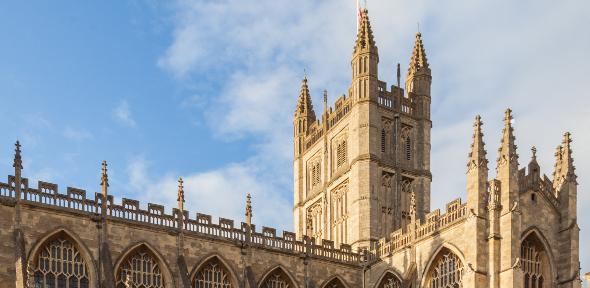
Installing solar panels could help historic buildings beat the rising costs of energy, according to a new study.
Researchers have carried out a feasibility study and found that installing solar panels on the Grade I listed Bath Abbey could save around 10 tonnes of carbon dioxide per year, significantly reducing the carbon footprint of the Abbey and other key heritage buildings that are difficult to insulate.
The team, including researchers from the University of Cambridge, examined the dimensions, tilt and orientation of the Bath Abbey roof, along with historic weather data and shading of the roof from spires, to model the best configuration for 164 photovoltaic (PV) panels and estimated the amount of electricity that could be generated in a normal year.
"I’m hopeful our work will encourage other historical buildings to consider installing solar panels” Alan Bowman, Cavendish Laboratory, Cambridge
They found that the setup could produce around 45 megawatt hours per year, which accounts for roughly 35% of the Abbey’s annual usage. The equivalent amount of carbon dioxide saved, versus buying the electricity from the National Grid, would be around 10 tonnes per year, significantly reducing the carbon footprint of the building.
A cost-benefit analysis showed that the system could pay for itself in 13 years and provide a profit of £139,000 over a lifespan of 25 years. It would also future-proof the Abbey from rising costs of energy bills. The findings show that despite a large initial outlay, the system would be financially feasible for the historic Grade I listed building.
The research was performed as part of the Bath Abbey Footprint programme, part of the Church of England’s Shrinking the Footprint campaign, which aims to reduce the carbon footprint of its historic buildings.
The Bath Abbey Footprint programme has already reduced its carbon footprint by using the geothermal hot springs of the local area to provide underfloor heating and installing LED light bulbs to illuminate the interior.
Read the full University of Cambridge article.
Matthew J. Smiles et al. ‘Next steps in the footprint project: A feasibility study of installing solar panels on Bath Abbey.’ Energy Science & Engineering (2022). DOI: 10.1002/ese3.1069

